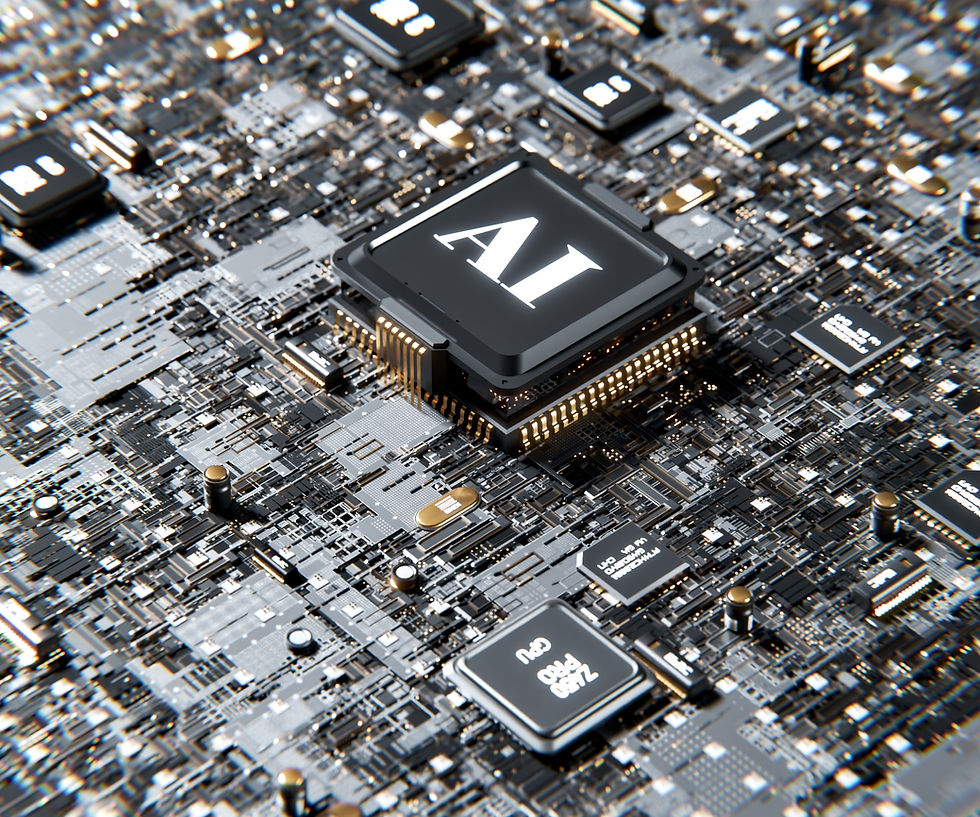Software Supply Chain Security in the Age of AI: Leveraging AI Technologies
- Dan Griffith
- Jan 7
- 5 min read
Updated: Jan 13

Background
With the rise of AI technologies and their increasing use by threat actors, today's IT security organizations face an increasing variety and volume of sophisticated cyber attacks. The first post in this series introduced Cyberify’s method of classifying AI security discussions: Security From AI, Security With AI, or Security Of AI. This post then highlighted a critical attack surface security professionals must defend from AI-enhanced threats: software supply chains, the complex, distributed, and interdependent application development ecosystems utilized to fabricate digital products. This article called attention to the growing risks to these software supply chains, emphasizing the potential for AI to amplify these threats.
The second post in this series shifted the focus from AI-enhanced software supply chain threats to mitigating the risks posed by these evolved threats. It likened the situation to a soccer team facing robot-aided opponents, stressing the importance of bolstering fundamental security capabilities in anticipation of extensive attacks that must be countered. By strengthening their core security "muscle memory," organizations can better defend against increasingly sophisticated attacks targeting their software supply chains.
The third post in this series outlined techniques for defending software supply chains from advanced, sophisticated AI-powered attacks. Much as soccer teams build on their fundamental defensive skills by preparing for set pieces and combination play, security organizations need to prepare for AI-enhanced attacks. Building upon foundational security practices, the authors recommend a multi-layered defense strategy utilizing a combination of capabilities.
A Historical Corollary

The rapid adoption of AI technologies by threat actors to provide competitive advantages against cybersecurity organizations is analogous to previous technological revolutions. Perhaps the most useful of these is the defeat of France by Nazi Germany in 1940. The German military triumphed in just over six weeks, despite profound French defense investments made with the sole purpose of preventing such an event.
Following World War I, France was deeply traumatized by the death and destruction it suffered fighting Germany and its allies from 1914 to 1918. The Western Front battles were fought largely on French and Belgian soil, and were so catastrophic for France that even 100 years after the conclusion of the war several hundred tons of unexploded ordnance (mostly artillery shells) still remain in French fields, hills, lakes, and rivers. In the years following the war, France constructed a series of fortifications along its northeastern border called the Maginot line, designed to be impregnable against the ruinous artillery bombardments that characterized WWI battles, meant to deter a rapidly re-arming Germany.
Unfortunately for France, the German military took an alternate approach, emphasizing technologies that had evolved dramatically since the end of World War I, focusing on the battlefield speed and mobility enabled by aircraft, tanks, motorized infantry, and radio communications. As a result of these tactical advantages and unfortunate French choices, when Germany launched its invasion of France in 1940, French forces could not counter Germany’s “Blitzkrieg” (lightning war) tactics that largely bypassed fortifications and attacked weak points in rapid succession, ultimately resulting in France's rapid defeat and surrender.
This new method of combat, enabled by evolving technologies, was directly responsible for massive German victories in the early battles of WWII, in France and elsewhere. Countering these tactics to stave off complete defeat required that the Allied militaries pivot to adopt new technologies (radar, for one) and then rapidly iterate and improve their tactics. That historical lesson is similar to the current situation in cybersecurity and AI. Security organizations need a strategy for fighting and winning the next battles, not the past ones, and the upcoming battles in cybersecurity will see an ever-increasing usage of Artificial Intelligence technologies on both sides.
Leveraging AI Technologies to Improve Security

We previously reviewed the widely exploited and publicized Log4J vulnerability as an example of the risks posed by software supply chain threats. In early December 2024, another successful attack on a software supply chain came to light, in this case targeting open-source tools used primarily by security professionals in a year-long campaign. This existing trend of increasing software supply chain risk will likely worsen in the near future, at least partly due to the proliferation of AI technologies. However, many of the same AI technologies that empower attackers can also be leveraged to bolster organizations' security postures. Some of the most promising capabilities are:
Intelligent Threat Detection and Response: AI algorithms excel at analyzing vast datasets and identifying patterns that may indicate malicious activity. By monitoring network traffic, system logs, and code repositories, AI-powered systems can detect anomalies, suspicious code commits, or unusual dependency changes, signaling potential supply chain attacks. This real-time threat detection enables security teams to respond swiftly, minimizing the impact of breaches.
Secure Development Practices: Integrating AI into the software development lifecycle (SDLC) can promote secure coding practices. AI-powered code analysis tools can identify potential security flaws in real time, providing developers with immediate feedback and guidance on secure coding techniques. This shift-left approach reduces the risk of vulnerabilities being introduced into the codebase from the outset.
Dependency Analysis and Management: Modern software relies heavily on third-party libraries and components, introducing potential vulnerabilities throughout the supply chain. AI can automate the analysis of dependencies, identifying known vulnerabilities, outdated versions, or suspicious code within these external components. This enables security teams to proactively manage dependencies and mitigate risks associated with third-party code.
Vulnerability Assessment and Remediation: AI technologies can significantly enhance vulnerability scanning, assessment, and patching capabilities. Traditional scanners often rely on static analysis, which can miss complex or dynamically generated vulnerabilities. AI-powered tools can employ techniques like deep learning to analyze code execution paths, identify hidden weaknesses, and even suggest potential remediation strategies. This proactive approach helps to address vulnerabilities before they can be exploited.
Enhanced Threat Intelligence: Staying ahead of the evolving threat landscape is crucial. AI can play a vital role in gathering and analyzing threat intelligence from various sources, including open-source repositories, security forums, and dark web communities. By identifying emerging threats and attack patterns, AI helps security teams anticipate and proactively defend against potential supply chain attacks.
Robust Incident Response: As attackers increasingly leverage AI to develop sophisticated attacks, defenders must adapt. AI-powered security systems can analyze attack patterns, learn from previous incidents, and even predict future attack vectors. One example is Meta’s use of AI to streamline investigating and resolving system reliability issues. This new system first uses heuristics to narrow down the potential causes of an issue, and it then leverages a large language model (LLM) to rank the remaining possibilities, achieving much greater accuracy in identifying the root cause. This AI-assisted approach significantly reduces the time and effort required for Meta to diagnose and fix problems, ultimately improving system reliability and serving as a prime example of AI's potential in incident response.
Continuous Monitoring and Adaptation: The software supply chain constantly evolves, requiring continuous monitoring and adaptation of security measures. AI can automate the monitoring of software components, dependencies, and system activities, identifying changes that may introduce new vulnerabilities or risks. This dynamic approach ensures that security measures remain effective despite evolving threats.
Software Supply Chain Security in the Age of AI, With AI

Much as technological changes drive new military strategies and tactics, as the cybersecurity threat landscape continues to evolve, incorporating new technologies like AI into security strategies will be essential. AI technologies provide powerful capabilities for real-time analysis, pattern recognition, and predictive modeling, a powerful arsenal in the defense against increasingly sophisticated attackers. By embracing AI-powered security solutions, IT organizations can significantly enhance their ability to protect their software supply chains.
The next post in this series will examine strategies and best practices for securing AI technologies themselves, which we call Security Of AI. Finally, If you'd like to discuss Cyberify's perspectives on AI and software supply chain security in more depth, book a time to chat!



Comments